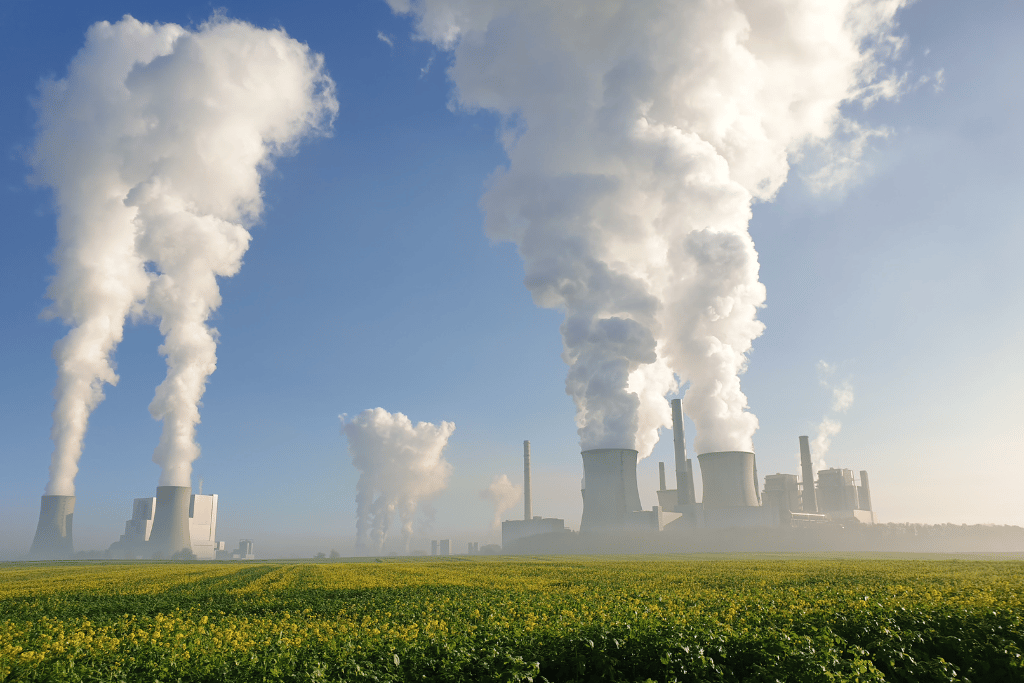The all-time high carbon price under the flagship EU emissions trading system marks a milestone in the bloc’s effort to cut pollution, as analysts suggest it will incentivise companies to invest in cleaner energy and emerging carbon capture technologies.
—
EU carbon price hit an all-time high of €101 a tonne on Tuesday, marking a symbolic moment in the 27 bloc’s efforts to make polluting costlier and slash emissions.
It is the first time that allowances traded under the EU emissions trading system (EU ETS) have surpassed the symbolic triple-digit mark, a price that, analysts suggest, will incentivise companies to start considering less polluting alternatives or investments in technologies such as carbon capture and storage.
Launched in 2005, the EU ETS is the second-largest carbon market in the world. It operates throughout all EU countries including Iceland, Lichtenstein, and Norway, and is linked to limiting emissions from 10,000 different installations in the power sector, combustion plants, oil refineries, and airlines. This totals about 40% of the EU’s greenhouse gas (GHG) emissions (2bn tonnes CO2/year) with the immediate target of a 55% net reduction in GHG emissions by 2030. Since its introduction, the bloc managed to cut emissions by around 43% in these sectors.
You might also like: What is an Emissions Trading Scheme and How Does It Work?
GHGs covered include carbon dioxide, nitrous oxide, and perfluorocarbons. Last December, the bloc agreed to add the maritime industry to its carbon market, a move that effectively forces vessels to pay for their carbon dioxide, methane, and nitrogen dioxide emissions for voyages within the bloc, adding pressure to scale up green infrastructure and technologies. Besides that, the European Commission also adopted a proposal for the bloc’s first framework to certify high-quality carbon removal projects.

EU carbon permits price in the last 5 years. Graph by Trading Economics.
EU carbon price has risen fivefold since 2020 and gains have accelerated significantly with tighter rules agreed upon in December. According to Reuters, EU allowances are expected to average €81.40/tonne in 2023 and €94.14 in 2024, up 4.2% and 1.9% respectively.
“No one thought it would be likely or feasible that the price would go up to such a level in such a short time,” Michael Pahle, head of the working group “Climate and Energy Policy” at the Potsdam Institute for Climate Impact Research (PIK), told The Associated Press.
The Commission wants European industries to cut emissions by 62% by 2030 from 2005 levels, compared to a previous target of 43%. These efforts received a boost from Europe’s successful scale-up of renewable power production last year, as the bloc was trying to wean itself off Russian gas.
According to the 2022 State of the Energy Union report, the EU managed to increase its share of renewables in the electricity mix to 43% in the second quarter of 2022, outplaying fossil fuels, which stopped at 36%. Poland saw the greatest increase in renewables (48.5%) between March and September compared to 2021. From May to August 2022, the bloc hit a record 12% in solar power production and 13% from wind, with 19 of the 27 member states achieving record wind and solar power generation.
You might also like: Renewables on Track to Become Largest Source of Global Electricity by 2025, IEA Says


















